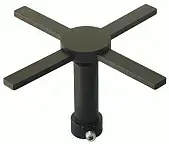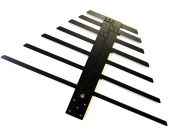Walkie-talkies, vehicle communication systems, and other mobile equipment use VHF frequencies for short-range voice transmission. The commercial VHF band goes from 132 to 174 MHz. It is divided into business/private and government-allocated spectra. This article will discuss the advantages of using VHF mobile commercial band antennas. These antennas are designed for professional work in a specific range of the electromagnetic spectrum.
Greater Signal Clarity and Reception
Effective wireless voice communication continually balances clarity versus range. Commercial VHF antennas tuned to specific business portions of the VHF spectrum maximize signal reception and precision. This eliminates crosstalk and static that can garble critical instructions or safety information. Modern VHF antenna engineering also minimizes dropped calls for continuous access.

Rugged and Compact Designs
Portable job site radios, two-way truck systems, and other mobile commercial-grade products face extreme weather and local interference. Their transmitter/receivers work with small flat panels or discreet low-profile mobile antennas. These antennas are designed to optimize local broadcasting power without adding extra bulk.
Specialized International Spectrums
VHF Mobile Antennas differ by region worldwide. This is to prevent overlap and crosstalk issues. Choosing region-specific mobile antennas allows for proper tuning and legal operation. This is especially important when providing international equipment or vehicles.
Accessing Business/Private Frequencies
The 140-174 MHz commercial band segment is divided into exclusive business and private spectra. This is separate from public government allocations. Commercial VHF antenna models are available. They are for services, management, security teams, and other personnel. These individuals need reserved conversation channels. It stops busy signals caused by many users on open airwaves.
Improved In-Building Penetration
Commercial building construction can disrupt cell or wifi connections. This happens because these connections depend on higher microwave frequencies. VHF wavelengths are longer and pass through walls and structures more easily. They have less attenuation and blackout problems. Mobile personnel rely on portable radios for improved indoor and underground communication.
Tunnel and Remote Location Connectivity
Using VHF connections, mobile crews and vehicles can stay connected in remote job sites, underground tunnels, and other isolated locations. VHF UHF Antennas are especially useful when standard wireless systems are not reliable. Low-band VHF travels far. It passes through foliage and uneven terrain. It is more reliable.

Emergency and backup capabilities.
Natural disasters and accidents can make normal infrastructure stop working. This makes mobile communication tools with short-range VHF systems and scatter capabilities more useful. Reliable alternate communication capacity helps coordinate urgent response.
Enhancing Onboard Technology Integration
Modern vehicles have many sensors and instruments. They are used for engine functions, location tracking, usage metrics, and maintenance alerts. These systems transmit data via VHF receptors to the home base for analysis. Upgrading the OEM antennas amplifies that vital machine-to-machine interaction.
Custom Solutions Available
Off-the-shelf VHF mobile antennas are good for most commercial uses. But big fleet vehicles with sensitive equipment or tough environments need custom-engineered solutions. Antennas.us, a technology leader, lets you customize footprints, frequency ranges, gain levels, and radiation patterns for special mobile assets. Onboard testing confirms better performance than other products in the market.
Special antennas are made for specific tasks. They help crews by ensuring reliable communication. This removes any uncertainty about wireless connectivity. Contact antenna experts to help implement modern VHF systems into your mobile equipment. This will improve contact clarity and give you more mobility.


